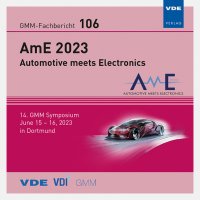Signal / Service Translation - Where is the place to be?
Konferenz: AmE 2023 – Automotive meets Electronics - 14. GMM Symposium
15.06.2023-16.06.2023 in Dortmund, Germany
Tagungsband: GMM-Fb. 106: AmE 2023
Seiten: 6Sprache: EnglischTyp: PDF
Autoren:
Mader, Ralph; Sieber, Rudolf; Herold, Alexander; Oehlschlaeger, Rene (Vitesco Technologies GmbH, Regensburg, Germany)
Inhalt:
The electronic architecture of a modern car is on its way to supporting "Software Defined Vehicle" SDV, with the aim of enabling almost hardware-independent software development. Enabling the path from the cloud to the vehicle requires a service-oriented architecture SOA, which is typically not the case with traditional automotive software architectures. In recent decades, signal-based communication protocols such as CAN, FlexRay, LIN have been used and these have influenced the architecture of the software. The AUTOSAR Classic platform, which is typically the standard for most ECUs with its implicit or explicit sender-receiver communication pattern, supported this, and most of the existing software components are designed accordingly. This paper describes the impact of SOA on function partitioning, delivery, control strategy limitations, API requirements from standards, safety and fail operational requirements, migration and variant management strategies of OEMs, and uses examples from the field of electrification functionalities such as thermal management to show possible design decisions. Subsequently, the possibilities offered by the AUTOSAR platform to implement signal/service translation on an AUTOSAR Adaptive and Classic machine will be briefly discussed. In addition, it summarizes the possibilities that are now available on a microcontroller to enable partial updates. It will conclude with a brief summary of the choices and an outlook on standardization work in this area.


